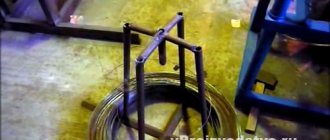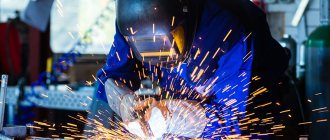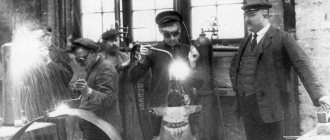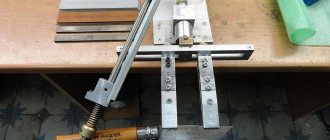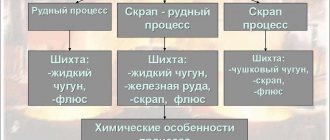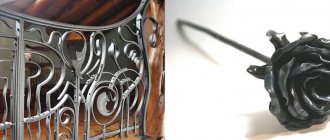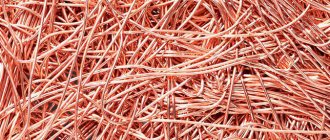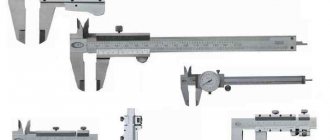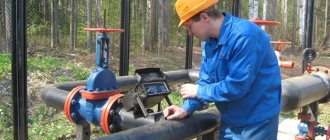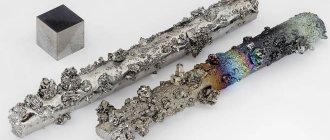Construction and receipt
Rubber is a diene polymer. The structural and molecular formula of rubber depends on the type of material. Natural rubber is obtained from the thick milky sap - latex - of hevea, castilloa, maniota, sapium and other plants. This rubber is a polymer of isoprene (2-methylbutadiene-1,3) and has the formula (C5H8)n, where n=1000-3000.
Rice. 1. Hevea.
Artificial rubber was obtained in 1932 using the Lebedev method. First, divinyl (1,3 butadiene) with the formula (C4H6)n is prepared from ethyl alcohol:
2C2H5OH (MnO, ZnO; 400-500°C) → CH2=CH-CH=CH2 + 2H2O + H2.
By polymerizing divinyl, butadiene rubber is obtained:
CH2=CH-CH=CH2 → (-CH2-CH=CH-CH2-)n.
Rice. 2. Rubber molecules.
Modern industry produces synthetic rubbers from various alkadienes. Depending on the raw materials used, isoprene, butadiene, ethylene-propylene, chloroprene and other types of rubber are distinguished.
Natural rubber [edit | edit code]
High molecular weight hydrocarbon (C5H8)
n, cis-polymer of isoprene; found in the milky sap (latex) of Hevea, Kok-Sagyz (a perennial herbaceous plant of the Dandelion genus) and other rubber-bearing plants. Soluble in hydrocarbons and their derivatives (gasoline, benzene, chloroform, carbon disulfide, etc.). Natural rubber practically does not swell or dissolve in water, alcohol, or acetone. Already at room temperature, natural rubber absorbs oxygen, oxidative destruction occurs (rubber aging), and its strength and elasticity decrease. At temperatures above 200 °C, natural rubber decomposes to form low molecular weight hydrocarbons. When natural rubber interacts with sulfur, sulfur chloride, and organic peroxides (vulcanization), long macromolecular bonds are connected through sulfur atoms to form network structures. This gives the rubber high elasticity over a wide temperature range. Natural rubber is processed into rubber. In its raw form, no more than 1% of the extracted natural rubber (rubber glue) is used. Rubber was discovered by de la Condamine in Quito (Ecuador) in 1751. More than 60% of natural rubber is used to make car tires. Natural rubber is produced on an industrial scale in Indonesia, Malaysia, Vietnam, Thailand, Brazil and China.
Properties
Rubber has useful properties for use: elasticity (strength) and water resistance. Rubbers bend and stretch well and retain moisture on the surface.
Rubbers remain in an amorphous state for a long time. However, the state of aggregation may change depending on temperature:
- 0-10°C – fragile, opaque;
- 20°C – soft, elastic, translucent;
- 50°C – plastic, sticky;
- 80°C – non-plastic;
- 120°C – resinous, liquid;
- 200-250°C – gaseous (a mixture of gases is released).
When stored in the cold for a long time, the material irreversibly loses its properties: it hardens, becomes inelastic and brittle.
Rubbers have dielectric properties and low permeability to water and gases. The material does not dissolve in water, weak acids, or alkalis. It dissolves after swelling in gasoline, benzene, carbon disulfide and chloroform.
Rubber molecules have a linear structure, but are not elongated in a straight line, but are curved, forming coiled balls. When the material is stretched, the molecules straighten, which explains the elasticity of rubber.
Synthetic rubber and its main types
Butadiene rubber is used to make automobile tubes and tires. The operational, as well as physical and chemical properties of the products are much better compared to natural materials.
One of its features is the ability to reliably hold air. It exceeds the similar quality of natural material by about 10 times. Chemistry has made it possible to create materials whose characteristics are significantly superior to natural rubber.
Chloroprene rubber is supplied to customers in the form of a light yellow mass.
Distinctive qualities of the product:
high resistance to fire and temperature;
it is resistant to ozone, low temperatures and other types of weather influences;
it has a high level of adhesion to fabrics, metals and other materials.
The material can crystallize under tension. This quality increases its strength characteristics.
Material made on the basis of ethylene propylene is used where impact-resistant rubber is needed.
Organosilicon rubbers have increased resistance to temperature, chemical influences, and abrasion. This material does not allow gases to pass through.
Divinyl rubber is used to create gaskets in high pressure installations.
Application
The main use of rubber is the production of rubber for tires. The material is also used to make:
- heat, electrical, sound, waterproofing materials;
- solid rocket fuel;
- seals;
- glue;
- varnishes;
- elastic bands;
- floor coverings;
- hoses;
- gloves;
- shoes;
- toys;
- furniture;
- erasers.
Rice. 3. Rubber products.
Rubber and rubber, basic definitions
Rubber is a high-molecular compound based on diene hydrocarbons. There are natural and synthetic rubber.
Rubber was already known in North America at the end of the 15th century. The Indians, whom many take for savages, used it to make shoes and dishes, and extracted it from the sap of Hevea plants. They called the liquid released from the tree “tree tears.”
Europeans learned about rubber only after the discovery of America. And only centuries later, in 1823, they began to use it to make waterproof clothing; the fabric was impregnated with liquid rubber, and it acquired water-repellent properties.
A few years after the first experience of using rubber, its properties were more fully studied and the idea arose to use it as a raw material for the production of rubber.
The process of converting rubber into rubber is called vulcanization. As a result of this technological process, rubber interacts with the vulcanizing reagent. As a result, rubber molecules are “crosslinked” into a single structure resembling a mesh.
Rubber is a highly elastic polymer obtained by vulcanization of natural or synthetic rubber.
What have we learned?
From the 10th grade chemistry lesson we learned about the structure, properties and use of rubbers. Rubber is a natural or synthetic material that is elastic. Natural rubbers are obtained from latex, the viscous sap of some tropical trees. It is produced industrially from alkadienes, in particular from isoprene. Synthetic rubber was first produced in 1932. Physical properties change depending on temperature. The lower the temperature, the more fragile the material. Rubber is made from rubber.
Synthetic rubbers [edit | edit code]
The development of synthetic rubbers first began in Russia in 1900 by Butlerov’s students - Kondakov, Favorsky, Lebedev, Byzov [1]. In 1900, I. L. Kondakov was the first to obtain isoprene synthetically, and A. E. Favorsky began studying the polymerization of it. In 1903-1910, in parallel, groups of scientists led by Sergei Vasilyevich Lebedev and Boris Vasilyevich Byzov carried out work on producing synthetic rubber based on 1,3-butadiene by hydrolysis of petroleum feedstock [2]. Simultaneously and independently, similar work was carried out in England. For the first time, the technology for the production of butadiene synthetic rubber was developed in the laboratory by B.V. Byzov, who received the Butlerov Prize for this invention in 1911 [3]. However, a patent for this invention was issued only in 1913. During the First World War, the production of gas masks from Byzov synthetic rubber was not mastered [4].
Read also: Car lift for garage
The first patent for a process for producing butadiene synthetic rubber using sodium as a polymerization catalyst was issued in England in 1910. The first small-scale production of synthetic rubber using a technology similar to that described in the English patent took place in Germany during the First World War. The production of butadiene in Russia began in 1915 using technology developed by I. I. Ostromyslensky, who later emigrated to the USA. In the USSR, work on the production of synthetic rubber was continued by B.V. Byzov and S.V. Lebedev, who in 1928 developed the Soviet industrial technology for producing butadiene. Commercial production of synthetic rubber began in 1919 in the USA (Thiokol), and by 1940 more than 10 brands were produced worldwide. The main producers were the USA, Germany and the USSR [5]. In the USSR, the production of synthetic rubber began at the SK-1 plant in 1932 using the method of S.V. Lebedev (production of butadiene from ethyl alcohol followed by anionic polymerization of liquid butadiene in the presence of sodium) [6]. The tensile strength of Soviet synthetic rubber was about 2000 psi (for natural rubber this figure is 4500 psi, for Neoprene, the production of which was started by Du Pont (USA) in 1931 - 4000 psi). In 1941, as part of supplies under the Lend-Lease program, the USSR received a more advanced technology for producing synthetic rubber [5].
In Germany, sodium butadiene rubber has found fairly widespread use under the name “Buna” [de].
The synthesis of rubbers became significantly cheaper with the invention of Ziegler-Natta catalysts.
Isoprene rubbers are synthetic rubbers obtained by polymerization of isoprene in the presence of catalysts - lithium metal, peroxide compounds. Unlike other synthetic rubbers, isoprene rubbers, like natural rubber, have high adhesiveness and are slightly inferior in elasticity.
Currently, most rubbers produced are styrene-butadiene or styrene-butadiene-acrylonitrile copolymers.
Rubbers with heteroatoms as substituents or containing them in their composition are often characterized by high resistance to solvents, fuels and oils, resistance to sunlight, but have worse mechanical properties. The most widely used rubbers with heterosubstitutes in production and use are chloroprene rubbers (neoprene) - polymers of 2-chlorobutadiene.
Thiokols, polysulfide rubbers obtained by the polycondensation of dihaloalkanes (1,2-dichloroethane, 1,2-dichloropropane) and alkali metal polysulfides, are produced and used on a limited scale.
Main types of synthetic rubbers:
Test on the topic
- Question 1 of 5
When was artificial rubber first produced?
Start test (new tab)
Hall of Fame
To get here, take the test.
-
- Tarek El-Gohary
5/5
- Mikhail Ilyushin
5/5
- Yana Akbash
4/5
Natural rubber
99% of this material is obtained from the Hevea tree. To do this, cuts are made on the bark in the shape of the letter V. A groove is installed in the lower part, perpendicular to the surface, through which the juice gradually flows into a bowl placed below. The leakage of latex (milky sap of Hevea) lasts for one and a half hours.
The rubber content in it may vary. It depends on the:
the age of the tree from which the sap is collected;
the composition of the soil in which Hevea grows is important;
the time of year when the collection takes place;
what the weather was like at that time;
time and quality of cuts made;
other features of latex collection.
In order for natural rubber to be used, it must undergo the following processing:
First the spin is done. It is necessary in order to remove excess moisture from latex.
After this, the resulting strips are wrapped around a stick and dried over a fire.
The strips are laid out in one layer and left in the sun.
Now all that remains is to hold it over the smoke.
Rubber prepared in this way can serve as a raw material for rubber production.
The juice is extracted from trees that are already 12 years old. From 3 to 5.5 kg of latex can be obtained per year.
Composition of latex solution:
the rubber content in different cases ranges from 25% to 70%;
the content of other chemicals, including protein, does not exceed 1-2%.
Synthetic rubbers: history, diversity and prospects
| Item: | Chemistry |
| Kind of work: | Essay |
| Language: | Russian |
| Date added: | 03.04.2019 |
- This type of work is not scientific work, it is not a finished work!
- This type of work is a finished result of processing, structuring and formatting collected information intended for use as a source of material for independent preparation of educational work.
If you have a hard time understanding this topic, write to me on WhatsApp, we’ll look into your topic, agree on a deadline, and I’ll help you!
Using this link you can find abstracts on chemistry on any topic and see how they are written:
| Many ready-made topics for chemistry essays |
Check out these similar threads, they might be useful to you:
| History of the discovery and development of gas and oil fields in the Russian Federation |
| Hydrocarbon fuel, its types and purpose |
| Carbohydrates and their role in living nature |
| Ethanol: the greatest good and terrible evil |
Introduction:
Rubbers are natural or synthetic materials characterized by elasticity, water resistance and electrical insulating properties, from which rubber is obtained through special processing. Natural rubber is obtained from a milky-white liquid called latex, the milky sap of rubber plants.
In technology, rubber is used to make tires for vehicles, airplanes, and bicycles; Rubbers are used for electrical insulation, as well as for the production of industrial goods and medical devices.
Synthetic rubber
One Brazilian Hevea tree, on average, until recently, was capable of producing only 2-3 kg of rubber per year; The annual productivity of one hectare of hevea before the Second World War was 300-400 kg of technical rubber. Such volumes of natural rubber did not satisfy the growing needs of industry. Therefore, there was a need to obtain synthetic rubber. Replacing natural rubber with synthetic rubber results in huge labor savings.
Modern, ever-developing and increasingly complex technology requires good and different rubbers; rubbers that would not dissolve in oils and gasoline, withstand high and low temperatures, and would be resistant to oxidizing agents and various aggressive environments.
Method for producing synthetic rubber using the Lebedev method
In 1910, S.V. Lebedev was the first to obtain synthetic rubber and butadiene. The raw material for producing synthetic rubber was ethyl alcohol, from which 1,3-butadiene was obtained (it turned out to be a more accessible product than isoprene). Synthetic butadiene rubber was then obtained through a polymerization reaction in the presence of sodium metal.
In 1926, the Supreme Economic Council of the USSR announced a competition to develop an industrial method for synthesizing rubber from domestic raw materials. By January 1, 1928, the jury had to submit a description of the method, a scheme for the industrial production of the product and 2 kg of rubber. The winner of the competition was a group of researchers headed by S. V. Lebedev, professor at the Medical-Surgical Academy in Leningrad.
In 1932, it was on the basis of 1,3-butadiene that a large synthetic rubber industry arose. Two factories for the production of synthetic rubber were built. Method S.V. Lebedev turned out to be more developed and economical.
In 1908-1909 S.V. Lebedev was the first to synthesize a rubber-like substance during the thermal polymerization of divinyl and study its properties. In 1914, the scientist began studying the polymerization of about two dozen hydrocarbons with a system of double or triple bonds.
In 1925, S.V. Lebedev put forward the practical task of creating an industrial method for the synthesis of rubber. In 1927 this problem was solved. Under the leadership of Lebedev, the first kilograms of synthetic rubber were obtained in the laboratory. S.V. Lebedev studied the properties of this rubber and developed recipes for producing industrially important rubber products from it, primarily car tires. In 1930, using Lebedev’s method, the first batch of new rubber was produced at a pilot plant in Leningrad, and two years later the world’s first synthetic rubber production plant was put into operation in Yaroslavl.
Obtaining synthetic rubber
In developing the synthesis of rubber, Lebedev followed the path of imitation of nature. Since natural rubber is a polymer of diene hydrocarbon, Lebedev also used diene hydrocarbon, only a simpler and more accessible one - butadiene.
The raw material for the production of butadiene is ethyl alcohol. The production of butadiene is based on the reactions of dehydrogenation and dehydration of alcohol. These reactions occur simultaneously when alcohol vapor is passed over a mixture of appropriate catalysts:
Butadiene is purified from unreacted ethyl alcohol and numerous byproducts and subjected to polymerization.
In order to force the monomer molecule to connect with each other, they must first be excited, that is, brought to a state where they become capable of mutual attachment as a result of the opening of double bonds. This requires the expenditure of a certain amount of energy or the participation of a catalyst.
During catalytic polymerization, the catalyst is not part of the resulting polymer and is not consumed, but is released at the end of the reaction in its original form. As a catalyst for the polymerization of 1,3-butadiene, S. V. Lebedev chose metallic sodium, first used for the polymerization of unsaturated hydrocarbons by the Russian chemist A. A. Krakau.
A distinctive feature of the polymerization process is that the molecules of the original substance or substances combine with each other to form a polymer, without releasing any other substances.
The most important types of synthetic rubber
The above-mentioned butadiene rubber (SBR) comes in two types: stereoregular and non-stereoregular. Stereoregular butadiene rubber is used mainly in the production of tires (which are superior to tires made of natural rubber in terms of wear resistance), non-stereoregular butadiene rubber is used for the production, for example, of acid- and alkali-resistant rubber and hard rubber.
Currently, the chemical industry produces many different types of synthetic rubbers that are superior to natural rubber in some properties. In addition to polybutadiene rubber (SBR), copolymer rubbers are widely used - products of co-polymerization (copolymerization) of butadiene with other unsaturated compounds, for example, with styrene (SKS) or acrylonitrile (SKN):
In the molecules of these rubbers, butadiene units alternate with units of styrene and acrylonitrile, respectively.
Styrene-butadiene rubber is characterized by increased wear resistance and is used in the production of car tires, conveyor belts, and rubber shoes.
Nitrile butadiene rubbers are petrol and oil resistant and are therefore used, for example, in the production of oil seals.
Vinylpyridine rubbers are products of copolymerization of diene hydrocarbons with vinylpyridine, mainly butadiene with 2-methyl-5-vinylpyridine. Rubbers made from them are oil-, petrol- and frost-resistant, and adhere well to various materials. They are used mainly in the form of latex to impregnate tire cords.
In the USSR, the production of synthetic polyisoprene rubber (SRI), which is similar in properties to natural rubber, has been developed and put into production. Rubbers made from SKI are characterized by high mechanical strength and elasticity. SKI serves as a substitute for natural rubber in the production of tires, conveyor belts, rubber, footwear, medical and sports products.
Organosilicon rubbers are used in the production of wire and cable sheaths, blood transfusion tubes, prostheses (for example, artificial heart valves), etc. Liquid silicone rubbers are sealants.
Polyurethane rubber is used as the basis for the wear resistance of rubber.
Fluorine-containing rubbers have, as a feature, increased heat resistance and are therefore used mainly in the production of various seals operated at temperatures above 200 °C.
Chloroprene rubbers - polymers of chloroprene (2-chloro-1,3-butadiene) - have properties similar to natural rubber and are used in rubbers to improve resistance to weather conditions, gasoline and oils.
There is also an inorganic synthetic rubber - polyphosphonitrile chloride.
Vulcanization of rubber
Natural and synthetic rubbers are used primarily in the form of rubber, since it has significantly higher strength, elasticity and a number of other valuable properties. Rubber is vulcanized to produce rubber. Many scientists have worked on vulcanizing rubber.
In 1834, the German chemist Ludersdorff first discovered that rubber could be made solid by treating it with a solution of sulfur in turpentine.
American merchant Charles Goodyear was one of the unlucky entrepreneurs who spent his entire life striving for wealth. He became interested in the rubber business, and sometimes being left without money, he persistently searched for a way to improve the quality of rubber products. Goodyear discovered a way to make rubber that was non-sticky, durable, and flexible by mixing rubber with sulfur and heating it.
In 1843, Hancock, independently of Goodyear, found a way to vulcanize rubber by immersing it in molten sulfur, and a little later Parkes discovered the possibility of producing rubber by treating rubber with a solution of hemichloride sulfur (cold vulcanization).
Englishman Robert William Thomson, who invented the "patent pneumatic wheel" in 1846, and Irish veterinarian John Boyd Denlob, who stretched a rubber tube onto his young son's bicycle wheel, were unaware that they had begun to use rubber in the tire industry.
Modern rubber production technology is carried out in the following stages:
1. Production of semi-finished products:
- Weighing rubbers and ingredients;
- Plasticization of rubber;
- Rubberization of fabric, calendering, extrusion;
- Cutting rubberized fabrics and rubber sheets, assembling products from semi-finished products.
2. Vulcanization, after which finished rubber products are obtained from raw rubber mixtures.
From a mixture of rubber and sulfur, fillers (carbon black is a particularly important filler) and other substances, the desired products are formed and heated. Under these conditions, sulfur atoms attach to the double bonds of rubber macromolecules and “crosslink” them, forming disulfide bridges. The result is a giant molecule that has three dimensions in space - length, width and thickness.
The polymer acquires a spatial structure:
Such rubber (rubber) will, of course, be stronger than unvulcanized rubber. The solubility of the polymer also changes: rubber, although slowly, dissolves in gasoline, rubber only swells in it. If more sulfur is added to the rubber than is necessary to form rubber, then during vulcanization the linear molecules will be “cross-linked” in too many places, and the material will lose elasticity and become hard - you will get hard rubber. Before the advent of modern plastics, ebonite was considered one of the best insulators.
Vulcanized rubber has greater strength and elasticity, as well as greater resistance to temperature changes than unvulcanized rubber; Rubber is impermeable to gases, resistant to scratches, chemicals, heat and electricity, and exhibits a high coefficient of sliding friction on dry surfaces and low on wet surfaces.
Vulcanization accelerators improve the properties of vulcanizers, reduce vulcanization time and consumption of basic raw materials and prevent vulcanization. Inorganic compounds (magnesium oxide MgO, lead oxide PbO, etc.) and organic compounds are used as accelerators: dithiocarbamates (dithiocarbamic acid derivatives), thiurams (dimethylamine derivatives), xanthates (xanthogenic acid salts) and others.
Activators of vulcanization accelerators facilitate the reaction of all components of the rubber mixture. Basically, zinc oxide ZnO is used as an activator.
Antioxidants (stabilizers, antioxidants) are introduced into rubber compounds to prevent rubber “aging”.
Fillers - increase the physical and mechanical properties of rubbers: strength, wear resistance, wear resistance. They also help increase the volume of raw materials, and therefore reduce rubber consumption and reduce the cost of rubber. Fillers include various types of carbon black (carbon black), minerals (chalk CaCO3, BaSO4, gypsum CaO ∙ 2H2O, talc 3MgO ∙ 4SiO2 ∙ 2H2O, quartz sand SiO2).
Plasticizers (plasticizers) are substances that improve the technological properties of rubber, facilitate its processing (reduce the viscosity of the system), and provide the ability to increase the content of fillers. The introduction of plasticizers increases the dynamic endurance of rubber and resistance to abrasion. Oil refining products (fuel oil, tar, paraffins), substances of plant origin (rosin), fatty acids (stearic, oleic) and others are used as plasticizers.
The strength and insolubility of rubber in organic solvents is related to its structure. The properties of rubber are determined by the type of raw material. For example, rubber made from natural rubber is characterized by good elasticity, oil resistance, wear resistance, but at the same time it is not very resistant to aggressive environments; SKD rubber has even higher wear resistance than NK. SKS styrene-butadiene rubber improves wear resistance. SKI isoprene rubber determines the rubber's elasticity and tensile strength, while chloroprene rubber determines its oxygen resistance.
In Russia, the first large rubber company was founded in St. Petersburg in 1860, later named “Triangle” (from 1922 - “Red Triangle”). Following this, other Russian factories for the production of rubber products were founded: Rezina and Bogatyr in Moscow, Explorer in Riga and others.
Use of rubber in industrial products
Rubber is of great economic importance. Most often it is used not in its pure form, but in the form of rubber. Rubber products are used in technology for insulating wires, in the production of various tires, in the military industry, in the production of industrial goods: shoes, artificial leather, rubberized clothing, medical products...
Rubber is a highly elastic, strong compound, but less ductile than rubber. This is a complex multi-component system consisting of a polymer base (rubber) and various additives.
The largest consumers of rubber products are the automotive industry and agricultural engineering. The degree of saturation with rubber products is one of the main signs of perfection, reliability and convenience of mass types of engineering products. The mechanisms and components of a modern car and tractor contain hundreds of parts and up to a thousand pieces of rubber parts, and at the same time, when the production of cars increases, their rubber capacity increases.
Types of rubber and their applications
Depending on the structure, rubber is divided into non-porous (monolithic) and porous.
Non-porous rubber is made from butadiene rubber. Has high abrasion resistance. The wear period of the sole is 2–3 times longer than the wear period of the sole. The tensile strength of rubber is less than that of natural leather, but the elongation at break is many times greater than that of natural sole leather. Rubber does not allow water to pass through and practically does not swell in it.
Rubber is inferior to leather in terms of frost resistance and thermal conductivity, which reduces the heat-protective properties of shoes. Finally, rubber is absolutely air- and vapor-tight. Non-porous rubber sole, leathery and transparent.
Regular non-porous rubber is used to make molded soles, cushions, heels, half-toes, heels and other parts of the bottom of shoes.
Porous rubbers are used as soles and platforms for spring, autumn and winter shoes.
Leather-like rubber is a rubber shoe material made from rubber with a high styrene content (up to 85%). The increased styrene content makes the rubber harder, as a result of which their thickness can be reduced to 2.5-4.0 mm while maintaining good protective functions.
The working properties of rubber-like leather are similar to those of natural leather. It has high hardness and ductility, which allows you to create shoe marks of any shape. Rubber leather takes color well when finishing shoes. It has high wear resistance due to its good abrasion resistance and resistance to repeated bending. The wearing period of shoes with leatherette soles is 179–252 days without any scattering in the nose.
The disadvantage of this rubber is its low hygienic properties: high thermal conductivity and lack of hygroscopicity and air tightness.
There are three types of leather-like rubber: a non-porous structure with a density of 1.28 g/cm3, a porous structure with a density of 0.8-0.95 g/cm3 and a porous structure with a fibrous filler, a density that does not exceed 1.15 g/cm3. Porous rubbers with fibrous fillers are called "leather jackets." These rubbers are similar to natural leather. Thanks to the fiber filler, their heat-shielding properties are increased, they are distinguished by lightness, elasticity, and good appearance. Leatherette rubber is used as a sole and heel in the manufacture of summer and spring-autumn shoes with an adhesive fastening method.
Clear rubber is a translucent material with a high content of natural rubber. Characterized by high wear resistance and hardness, excellent wear resistance for all types of rubbers. Transparent rubber is made in the form of molded soles (along with heels), with a deep corrugation on the running side.
A type of transparent rubber is styronip, which contains a larger amount of rubber. The resistance to repeated bending in styrone is more than three times higher than that of conventional non-porous rubbers. Styronip is used in the manufacture of shoes with an adhesive fastening method.
Conclusion
Rubber with a porous structure has closed pores, the volume of which, depending on the type of rubber, ranges from 20 to 80% of its total volume. These rubbers have a number of advantages over non-porous rubbers: increased softness, flexibility, high shock-absorbing properties, and elasticity.
The disadvantage of porous rubbers is the ability to shrink and also crumble in the forefoot upon impact. To increase the hardness of porous rubbers, polystyrene resins are introduced into their composition.
Currently, the production of new types of porous rubbers has been mastered: gunpowder and volcanic rocks. Pokreprep has a beautiful color, elasticity and increased strength. Vulcanite is a porous rubber with fibrous fillers, which has high wear resistance and good heat protection. Porous rubbers are used as soles for spring, autumn and winter shoes.
Where is it kept? Obtaining natural rubber:
For natural rubbers, the raw material source is the milky sap of some plants that produce latex (a white liquid with special properties). Latex itself is a fairly common component of plants and is found in representatives of rubber plants of various botanical groups.
It is found in different parts of plants. Therefore, they (i.e. plants) are classified as follows:
1. latex, when the substance accumulates in the milky juice,
2. chlorenchyma - the substance accumulates in young green shoots and leaves,
3. parenchymal - the substance accumulates in the roots and stems,
4. herbaceous latex plants of the Asteraceae family - these are Kok-sagyz, Crimea-sagyz and others, where rubber accumulates in small quantities in underground organs. These plants are not used in industrial rubber production.
Rubber trees grow mainly in the equator zone, not moving away from it more than 10° to the north and south, i.e. this is a belt 1300 km wide and is called the “rubber belt”. It is here that rubber trees are grown for industrial use on a global scale. Natural rubber is mainly obtained from the latex of the tropical Hevea brasiliensis tree. To do this, V-shaped cuts are made on the bark of a tree that has reached 5 years of age. One Hevea tree produces an average of 2-3 kg of rubber.
To make rubber extracted from Hevea brasiliensis, the milky sap (latex) is subjected to a coagulation or gelatinization process by adding acetic or formic acid, then washed with water, rolled into sheets and smoked.

